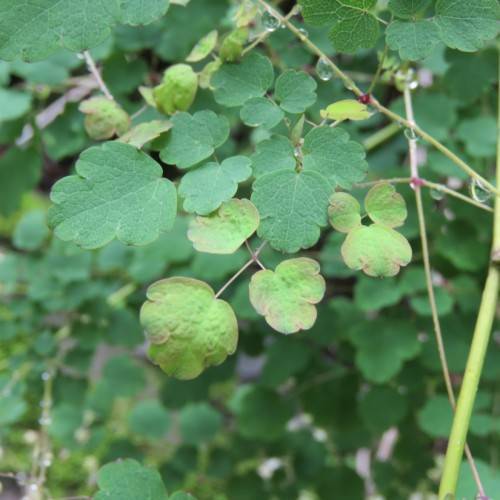
yellow meadow rue
Thalictrum foetidum
Cycle:
Herbaceous Perennial
Watering:
Average
Hardiness Zone:
5 - 8
Flowers:
Flowers
Sun:
Full sun,part shade
Leaf:
Yes
Growth Rate:
Low
Maintenance:
Low
Care Level:
Medium
watering
Yellow meadow rue should be watered when it shows signs of wilting or drying out, usually about 2 to 3 times in a week. Water should be applied deeply to saturate the root system and soak the soil around the plant. Do not water too frequently or too little as this could cause root rot and fertilizer burn. It is best to give the plant a thorough watering instead of frequent shallow waterings.
sunlight
Yellow meadow rue (Thalictrum foetidum) requires 4 to 8 hours of bright, direct sunlight each day to thrive. It does best when exposed to early morning sun and is tolerant of midday heat. If the plant is receiving too much direct sunlight, it is recommended that you provide some filtration or lightly shade the area to provide some relief. Additionally, providing morning sunlight and afternoon shade will enable it to develop into a more compact, well-branched plant. Therefore, when providing sunlight to this plant species, it is best to aim for between 4 and 8 hours of direct sunlight with some additional shading to protect it from extreme midday heat.
pruning
Yellow meadow rue (Thalictrum foetidum) should be pruned in late winter or early spring. Pruning should be limited to shoots that are weak or damaged. The goal of pruning is to thin the number of stems that the plant has, so it is not necessary to prune more than about 1/3 of the plant at a single time. This will help ensure that the plant does not become too top heavy, which can lead to problems with wind damage and disease. Additionally, deadheading after flowering will help the plant focus its energy to developing new buds and blooms.
